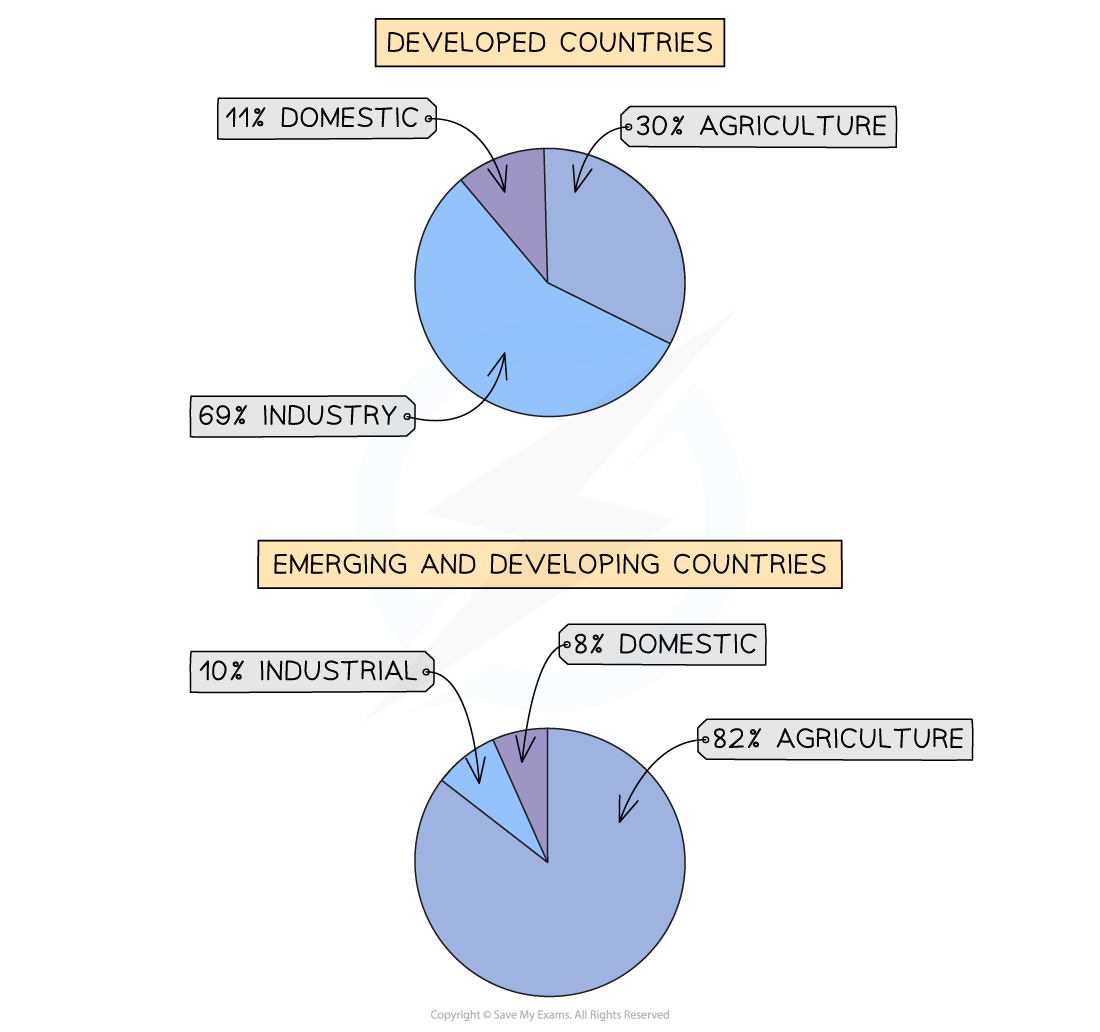Water Uses
- Only 2.5% of the water on Earth is freshwater
- 68.7% of freshwater is stored in glaciers and ice sheets and 30% is groundwater
- The remaining 1.3% of freshwater is in rivers, soil moisture, lakes and the atmosphere

Sources of water
- Global water use by sector is:
- 70% agriculture - irrigation of crops and water for livestock
- 20% industry - producing goods and generating energy
- 10% domestic - toilets, cooking, cleaning, washing
- The use by sector varies across countries depending on whether they are developed, emerging or developing

Water Use
- In developing and emerging countries most water is used for agriculture
- The use of water in leisure and tourism is increasing, particularly in developed countries
- In developed countries most water is used for industry



